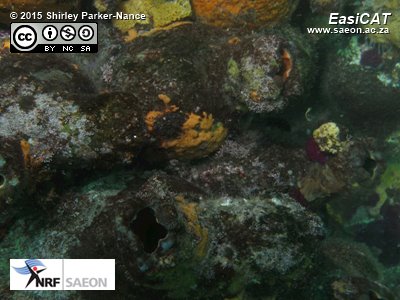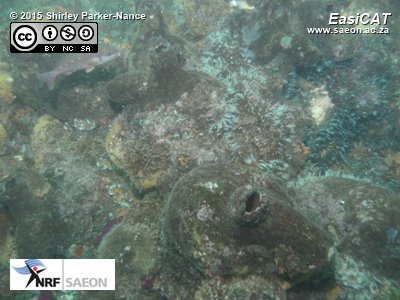
EasiCAT – Species Fact Sheet
Pyura stolonifera
Hartmeyer, R 1911| Phylum | Chordata |
| Class | Ascidiacea |
| Order | Stolidobranchia |
| Family | Pyuridae |
- Common species along intertidal rocky shores and on the upper regions of submerged shallow reef pinnacles were they form dense aggregations.
- Individuals can grow to a large size (up to 20cm in diameter).
- Two large siphons open in the upper part of the body close together.
- This species lack the pointed papillae on and around the siphons as is characteristic of Pyura herdmani.
- The test may be clean and relatively smooth to heavily encrusted by various other organism such as algae, sponges or other ascidian.
- Elaborately branched tentacles form a ring at the opening of the branchial sac.
- Dorsal tubercle in the form of two spiral cones.
- Branchial sac has 6 folds with longitudinal vessels.
- The oesophagus is long, the stomach voluminous with a large hepatic gland and the intestines form a loop obscured by endocarps.
- Single gonads on each side are divided into lobes which may be hidden by endocarps.


References
- Millar, R. H. 1962 Further descriptions of South African ascidians56:113-221
- Monniot, C.; Monniot, F.; Griffiths, C. and Schleyer, M. 2001 Ascidians of South Africa.108:1-141
- Shenkar, N.; Gittenberger, A.; Ruis, M.; Rocha, R. M.; Swalla, B.; et al. 2017 Ascidiacea World Database. Atriolum marinense Kott, 2001. Accessed through: World Register of Marine Species at: http://www.marinespecies.org/aphia.php?p=taxdetails&id=250052 on 2019-03-12